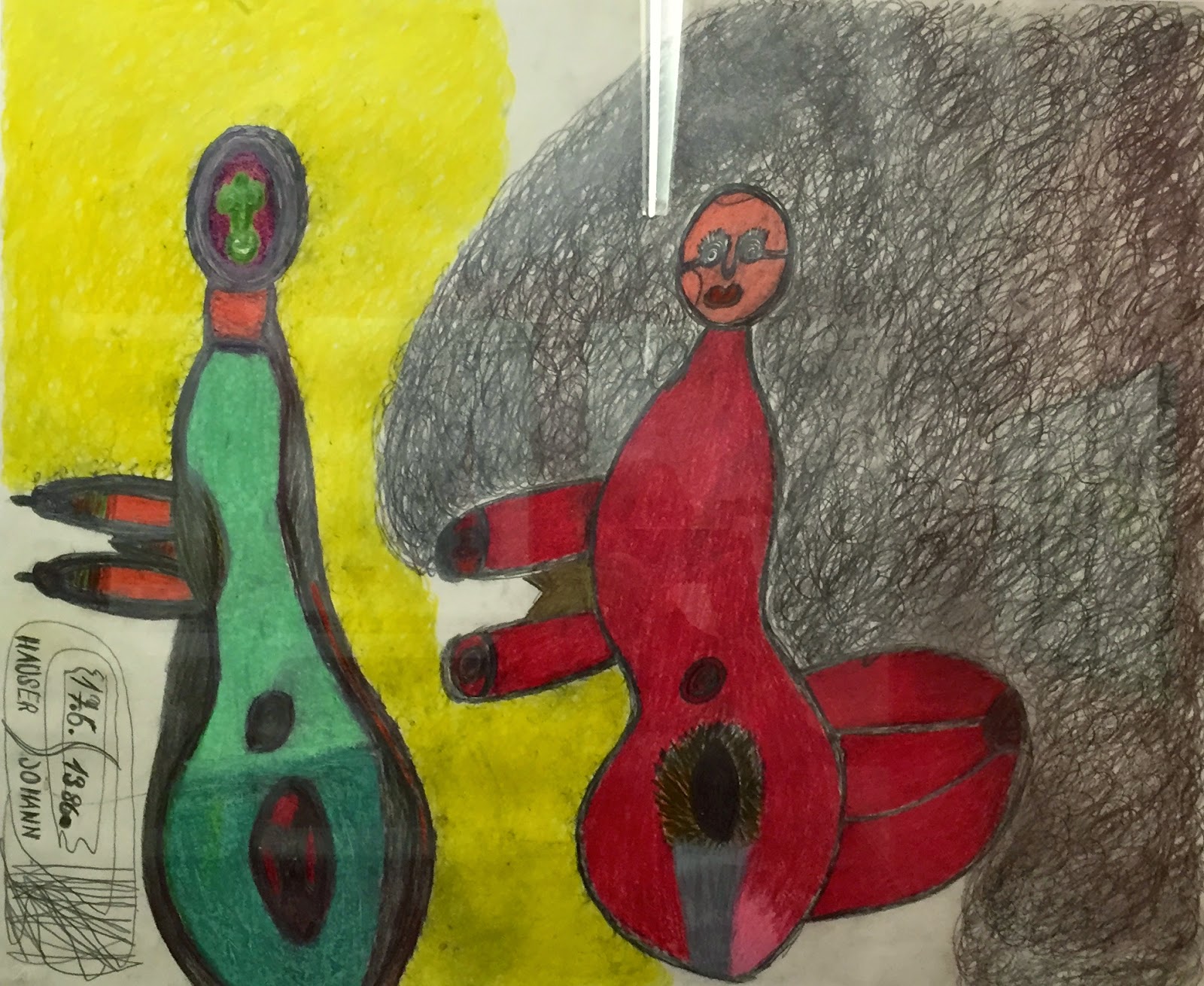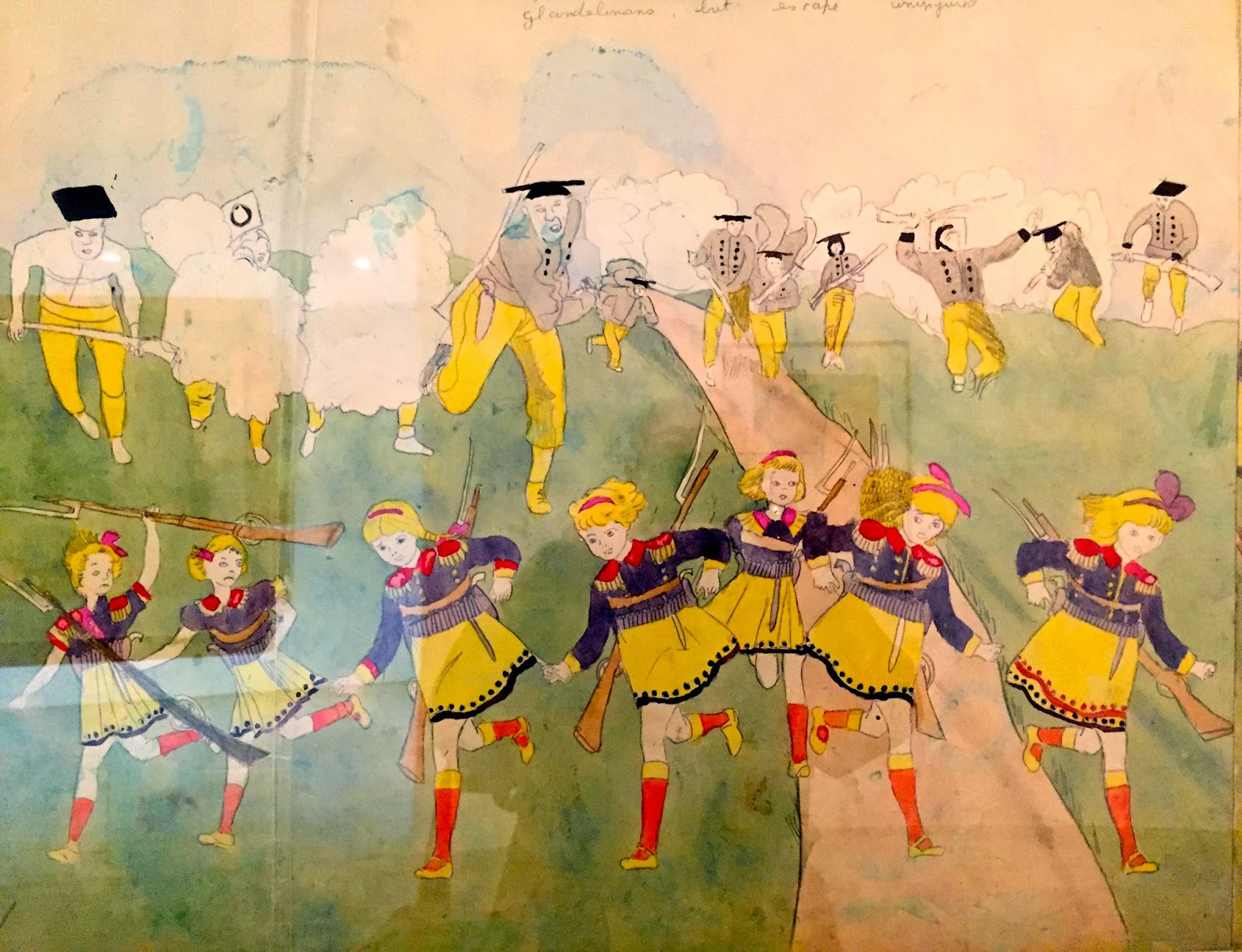Amongst his many activities, Bruno Ducharme is a collector and a film maker. In 1999, he founded a non profitable organisation named « abcd » which is one of the reasons I don’t forget the name. « Art Brut, Connaissances et Diffusion »
He has assembled his collection over more than thirty years. It now comprises 3,500 works by 300 artists from numerous countries and from the mid-1800s to the present day. Some of these works were produced in mental institutions, others in the solitude of our towns and villages. Some are mediumistic works, others are folk objects which escape the conventions of tradition.
The collection comes from collecting and research undertaken by pioneering psychiatrists such as Hans Prinzhorn, or artists and writers such as André Breton. Such works were theorised in 1945 by Jean Dubuffet who invented the concept of art brut (“outsider art”). By placing these productions under the umbrella of art, Dubuffet initiated a radical paradigm shift that incites us to rethink our idea of art.
Through their visions, which we could qualify as delirious, each of them touches on a form of understanding that echoes universal and fundamental questions: “Who are we? Where are we from? Where are we heading?” Despite this, they belong to no movement that we know. They are often isolated, ignore each other’s very existence and consequently do not form any kind of ideological or stylistic school.

I have seen references to this man over the years and when his collection was presented at « La Maison Rouge » obviously I wanted to go along. Not in the first months, I might add as something was holding me back. My experience with Aloise (Raw Vision at the Saint Pierre Hall in 2001) and an exhibition in Lausanne which had showed work after work and finally I had seen nothing. It was too easy to identify her "people" and I got sick of them.

Serafine de Senlis, who had done those wonderful flowers.
Block buster exhibitions of such art, especially with one artist, I find rather hard to take. I waited and then I went.
There I was, surreptitiously taken photographs whenever there seemed to be a lack of surveillance. Frankly what surprised me that all the security guards were sitting down with the heads into their mobile telephones or wandering around and chatting. The no photograph sign was still in view and I was still taking photos more than usual and no-one was stopping me. The exhibition was huge. There was no way I could take a photo of the artist’s name as I always do. Many of the names I knew, Adolf Wölfli, Scottie Wilson, Madge Gill….but many I didn’t. It wasn’t until the last gallery and I think there were ten, that I understood that photography was permitted. "Damn", I said to myself but there was no way I could go back and take photos of all the artists’ names. No way either that I could remember or identify pictures from what I saw. Aloise yes
and perhaps some of the others too but I prefer to write nothing, rather than make mistakes.
So many of the artists were not identified. Their work was not thought of or described as being « art » so was found after they had left this world. Most of the work too has no title, is done on scraps of paper or whatever the artist could find or was given in the institution he was in.
Some artists had extraordinary memories of numbers and could name any date and any historical even going back to a few years after JC. Others created a language of their own. Musique, repetition...
What is for sure, this art is so intricate, so detailed that after hours
of looking at it, I become dizzy just looking at that detail. « Who are
we? » « what are we ? » Sex,
war,
everything living, - it’s all there.
Planes made out of cardboard by Hans-Jörg Georgi and that’s all he did….
Schizophrenic, « fous » who lived their world, in their art. It doesn’t always seem to be « happy » work and yet there was a madness which made them go on and do nothing but that. These then became dedicated artists…..
 I have seen references to this man over the years and when his collection was presented at « La Maison Rouge » obviously I wanted to go along. Not in the first months, I might add as something was holding me back. My experience with Aloise (Raw Vision at the Saint Pierre Hall in 2001) and an exhibition in Lausanne which had showed work after work and finally I had seen nothing. It was too easy to identify her "people" and I got sick of them.
I have seen references to this man over the years and when his collection was presented at « La Maison Rouge » obviously I wanted to go along. Not in the first months, I might add as something was holding me back. My experience with Aloise (Raw Vision at the Saint Pierre Hall in 2001) and an exhibition in Lausanne which had showed work after work and finally I had seen nothing. It was too easy to identify her "people" and I got sick of them. Serafine de Senlis, who had done those wonderful flowers.
Serafine de Senlis, who had done those wonderful flowers.





















































Commentaires